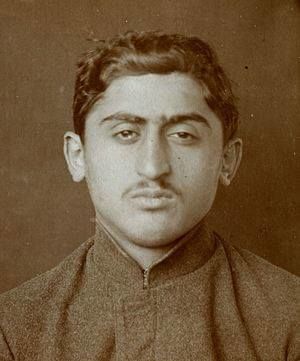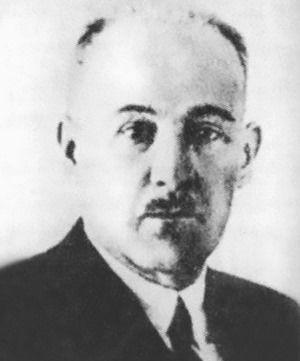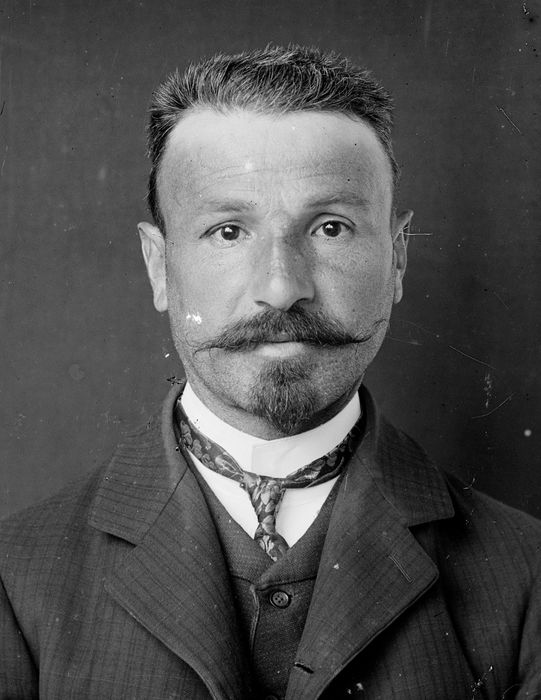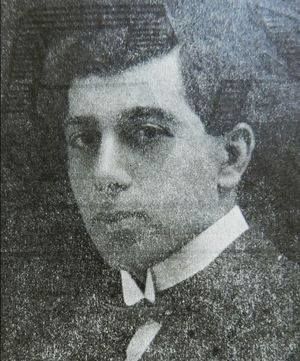The independence of the first Republic of Georgia took place a little over 100 years ago when Georgia’s National Council passed its Declaration of Independence on May 16, 1918. It held its first parliamentary elections over three days from February 14-16, 1919, with 15 political parties taking part. One of them was the Armenian Revolutionary Federation (ARF or Dashnaktsutyun). Though it did not win any seats in this first round, which took place shortly after the month-long Georgian-Armenian War of December 1918, the ARF was able to have four Armenian parliamentarians elected to the Constituent Assembly of Georgia in September 1919, during additional elections.
Most of their votes came from the districts of Borchalu (which included much of Armenia’s modern-day Lori marz), Akhaltsikhe and Akhalkalak.
In addition to the four members of the ARF, the 1919 parliamentary elections also brought four ethnic-Armenian members of the Georgian Social Democratic Party (also known as the Georgian Menshevik Party) to the First Constituent Assembly of Georgia.
One of these eight Georgian-Armenian representatives, Eleonora Ter-Parsegova, has already been profiled in EVN Report. This article will explore the lives and political activities of the other seven.
Georgia’s First Constituent Assembly and its ARF Members
During the February 1919 parliamentary elections, the ARF did not receive enough votes to secure seats in Georgia’s First Constituent Assembly. It was only when additional elections were held in September of the same year that the party’s Georgian Bureau was able to secure four parliamentary seats. The names of these four ARF representatives were Georgi Tigran Avetisian, Davit Grigoli Davitkhanian, Zori Navasard Zoryants, and Garegin Azat Ter-Stepanian. Though their lives have not been fully examined, parts of their biographies have been published in a book entitled “Georgia’s First Constituent Assembly.”
Tigran Avetisyan was a member of the ARF’s Georgian Central Committee’s “Workers” Group. He published articles in the party’s newspapers and was a member of Tbilisi’s Labor and Military Council of Deputies. In September 1919, he was elected to the First Constituent Assembly of the Democratic Republic of Georgia off the ARF’s list. He was also a member of the Assembly’s Constitutional Committee. After the sovietization of Georgia in 1921, he was arrested several times. According to archival data, he was first arrested by the Red Army’s 11th Emergency Division on March 17, 1921 (the reasons for his arrest are unknown, but it was most likely for being a counter-revolutionary or a nationalist). In April of that year, he and other members of the Workers Group declared loyalty to the Soviet authorities and were released. He was arrested a second time in 1922, again for unknown reasons. On April 30, 1923, under pressure from the Soviet secret service, Avetisyan and other ARF members published a memorandum declaring they would stop their party’s fight against Soviet special services. Nevertheless, many of them continued to be arrested and exiled until 1938. Tigran Avetisyan was sentenced to death by the Special Troika (People’s Commissariat of Internal Affairs or the NKVD) and shot on May 26, 1938.
Davit Davitkhanian was also a member of the Armenian Revolutionary Federation. He was arrested several times by Russian Imperial police, before Georgia’s independence in 1918, for his political activities and, specifically, his membership with the ARF. In 1910, he escaped the Russian Empire for Europe. After graduating from the Leipzig Institute in Germany, he returned to Tbilisi in 1914. In 1917, he became a member of the Tbilisi City Council. In 1918, he became a member of the Georgian Parliament, a temporary body based on quotas set for ethnic minorities with all the rights and authorities that were later transferred to the First Constituent Assembly. As a result of the additional elections in September 1919, he was elected to Georgia’s First Constituent Assembly through the ARF’s list. On November 7, 1919, he resigned from his post and was appointed as a representative of the Food and Supply Ministry of the Republic of Armenia in Georgia. After the sovietization of Georgia, Davitkhanyan left the country and resided in Istanbul until 1923. He lived in several European cities until 1951, when he finally settled in Buenos Aires, the capital of Argentina. There, he headed the daily newspaper Armenia. Davitkhanyan died on August 7, 1957, in Buenos Aires.
Zori Zoryants was probably the most prominent figure among the ARF parliamentarians. He was first cousin to one of the three co-founders of the party, Stepan Zoryan, who was also known as Rostom. He became an ARF party member in 1917. He was also the leader of the Social Democratic Party’s Havlabar Committee (Havlabar, or Avlabari, is the historic Armenian quarter of Tbilisi). During the clashes in Akhaltsikhe between the local Muslim (mostly Turkish) and Christian residents, he led the protection of the city. In 1918, one of the streets in Akhaltsikhe was named Zoryants after him for all the work and services he provided for the city. That same year, he became a member of the Georgian Parliament. He was arrested twice during the 1918 Georgian-Armenian War but was later released due to parliamentary immunity. He was also elected to the First Constituent Assembly of Georgia in September 1919. After the sovietization of Georgia, he became a member of the Akhaltsikhe Revolutionary Committee. In 1922, one of the organizers of the 1915 Armenian Genocide, Ahmed Jemal Pasha, was killed in Tbilisi. This led to arrests of ARF members, with Zoryants among them, by the Soviet authorities. He was released several months later. During the Great Soviet Terror or Great Purge (1936-1938), he and his wife, were arrested on charges of “Illegal activities within the anti-revolutionary Dashnak Party and extreme hostile behavior against the Soviet authorities.” Three years after their arrest, they were released and returned to Tbilisi. Zoryants died in a car accident in 1943 in Tbilisi, where he is buried.
Garegin Ter-Stepanian was also a member of the ARF’s Workers Group. He was elected to parliament after the September 1919 additional elections. He was arrested several times after the sovietization of Georgia but was released along with other members of the Workers Group when they declared their loyalty to the Soviet authorities. He was arrested one more time on November 5, 1921, but was released several months later after the assassination of Jemal Pasha in 1922. The rest of his fate is not documented.
These four figures were members of the highest legislative body of the first Georgian Republic, a body formed as a result of elections. Besides their political affiliations as members of the ARF, they were also members of different committees of the First Constituent Assembly of Georgia. Unfortunately, more details about their lives have yet to be researched.
Armenian Members of Georgia’s Social Democratic Party in the First Constituent Assembly
Alongside the ARF members of the First Constituent Assembly, there were four other Armenian members that were elected to parliament through Georgia’s Social Democratic Party’s list, the largest party at the time. Their names were Eleanora Ter-Parsegova, Ruben Georgi Aushtrov, Mkrtich Karapet Vardoyants and Konstantin Abgar Panyants.
Ruben Aushtrov was born on June 24, 1887, in Kutaisi. While he was a law student at the University of Moscow, he actively took part in the 1905 Russian Revolution. He later returned to Tbilisi and became a member of the Social Democratic Party, where he worked as a propagandist and organizer. In December 1917, he was one of the co-founders of Georgia’s Red Guard and later the National Guard. He was eventually elected as a member and secretary to the National Guard’s General Staff. In 1919, he was elected to the First Constituent Assembly of Georgia. After the country’s sovietization in 1921, he moved to France, along with most of the founding fathers of the Republic of Georgia. While living abroad, he worked as a construction worker and was very active in Georgian cultural life in France, where he also organized productions of Georgian plays. He died on December 23, 1937, due to illness.
Mkrtich Vardoyants was born in Alexandropol, modern-day Gyumri. He became a member of the Social Democratic Party in 1898. In 1905, he was a member of the Baku Revolutionary Movement, for which he was arrested first in St. Petersburg (1906-1907) and then in Baku (1910-1911). After the Bolshevik Revolution in 1917, he became a member of the Central Committee of the Railway Union of Russia. Along with Aushtrov and other politicians, he was one of the founders of the Georgian National Guard in 1917. He also led the repair work on armored military trains. He was elected to the First Constituent Assembly in 1919 through the Social Democratic Party’s list. He stayed in Georgia after the country’s sovietization, continuing his fight against the Soviet Union. A year after the country’s Soviet invasion, he was arrested with other leaders of the party and jailed for six months. Later, in September 1922, the Georgian Soviet authorities decided to exile a group political prisoners, Vardoyants included, to Siberia. However, this decision was met with prison riots, eventually leading to their exile to Poland instead. From there, Vardoyants moved to Paris in 1923. He died on December 6, 1955, near Paris. He is buried in the Leuville-sur-Orge Georgian Cemetery.
Konstantin Panyants was born in 1890 in the city of Gori. In 1904, he became a member of Russia’s Social Democratic Workers Party. In 1918, he was elected to the City Council of Sokhoum. He won a seat in the First Constituent Assembly of Georgia in 1919. After the Soviet invasion, he stayed in Georgia and continued his struggle against the Soviet Union. In 1921, he was arrested on anti-revolutionary charges but was released months later. In 1935, he started working as an agent for the Committee of Internal Affairs of Soviet Georgia. However, two years later, he was arrested and charged as a double-agent. Soviet authorities accused him of having connections and secretly working with Menshevik (Georgian Social Democratic Party) leaders Isidore Ramishvili, Nikolzo Kartsivadze and Davit Oniashvili. In 1937, the Special Troika decided to exile him for ten years to a correctional labor colony in Russia. The rest of his fate is not documented.
The first Republic of Georgia existed from 1918-1921. Despite its short life, the country’s legislative body was able to pass the country’s Constitution and fundamental laws. These Armenian parliamentarians played a significant role in that process.
---------------------------------------------------------
Source: The Constituent Assembly of Georgia, published in 2017 by the Soviet Past Research Laboratory SovLab.
by the same author
The Life and Times of Eleonora Ter-Parsegova
By Norik Gasparyan
A leading member of the Georgian Social-Democratic Party at the turn of the 20th century, Eleonora Ter-Parsegova played an important role in the struggle leading up to Georgia’s independence in 1918 and later, after it was sovietized.

Tigran Avetisyan.

Zori Zoryants.

Garegin Ter-Stepanian.

Ruben Aushtrov.







We are pleased to open up a comments section. We look forward to hearing from you and wish to remind you to please follow our community guidelines:
EVN Report welcomes comments that contribute to a healthy discussion and spur an informed debate. All comments will be moderated, thereby any post that includes hate speech, profanity or personal attacks will not be published.